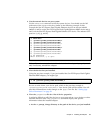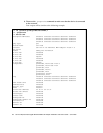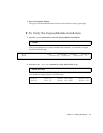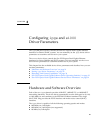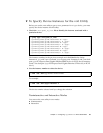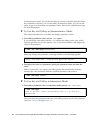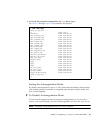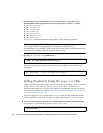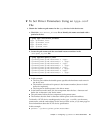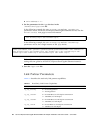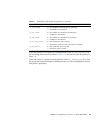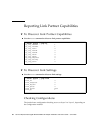
Chapter 3 Configuring ipge and e1000 Driver Parameters 23
▼ To Specify Device Instances for the ndd Utility
Before you use the ndd utility to get or set a parameter for a ipge device, you must
specify the device instance for the utility.
1. Check the /etc/path_to_inst file to identify the instance associated with a
particular device.
The instance numbers in the previous example are in bold italics for clarity.
Instances 0, 1, 4, and 5 are 4 on-board ipge copper ports. Instances 2 and 3 are dual-
port ipge PCI-Express Dual Gigabit Ethernet MMF device (in PCI-E slot 0) Instances
6 and 7 are dual-port ipge PCI-Express Dual Gigabit Ethernet UTP device (in PCI-E
slot 1).
2. Use the instance number to select the device.
For example:
The device remains selected until you change the selection.
Noninteractive and Interactive Modes
You can use the ndd utility in two modes:
■ Noninteractive
■ Interactive
# grep ipge /etc/path_to_inst
"/pci@780/pci@0/pci@1/network@0" 0 "ipge"
"/pci@780/pci@0/pci@1/network@0,1" 1 "ipge"
"/pci@780/pci@0/pci@8/network@0" 2 "ipge"
"/pci@780/pci@0/pci@8/network@0,1" 3 "ipge"
"/pci@7c0/pci@0/pci@2/network@0" 4 "ipge"
"/pci@7c0/pci@0/pci@2/network@0,1" 5 "ipge"
"/pci@7c0/pci@0/pci@9/network@0" 6 "ipge"
"/pci@7c0/pci@0/pci@9/network@0,1" 7 "ipge"
# ndd -set /dev/ipge instance instance-number
# ndd -set /dev/ipge instance 6



